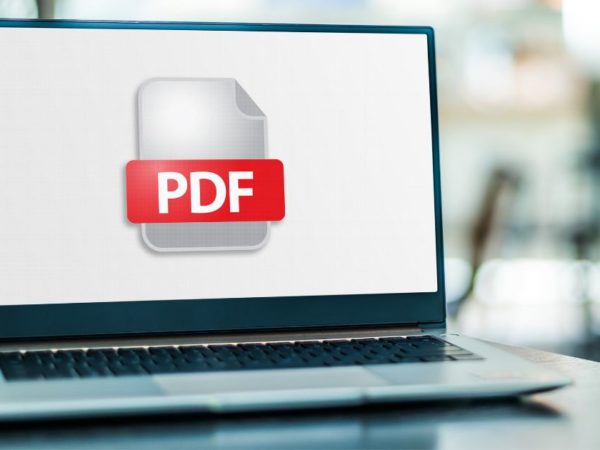In a home office, work-from-home, or hybrid working model, employees prefer using their own devices to save time from familiarising themselves with a company-provided device. Not to mention, businesses can also save a lot on IT hardware purchases.
BYOD has been changing how IT industries operate today. New IT services solutions are springing up just around the BYOD policy.
If you’re a business entrepreneur, IT professional, cybersecurity practitioner, or security solutions developer, you must continue reading to explore more BYOD and get benefitted from it.
Present Trend of IT Work Culture
The technical workforce of the IT industry has been advocating for work from home or hybrid work culture for many years. The COVID-19 pandemic forced many IT and digital businesses to allow their employees to work from home.
After the pandemic, the IT workforce starts returning to the office in a staggering rhythm. Most forward-thinking IT businesses have opted for a hybrid work culture where only a few employees need to come to the office regularly. Most IT staff can work from home and come to the office for a few days or hours, thereby setting up a hybrid work environment.
When the employee is working from home and working lesser in the office, there is no need for the business to buy computers, tablets, smartphones, etc., for its employees. Here comes bringing your own device, or BYOD for short.
What Is Bring Your Own Device (BYOD)?
<img alt="YouTube video" data-pin-nopin="true" data-src="https://kirelos.com/wp-content/uploads/2023/01/echo/hqdefault.jpg63ce4a90ea7bd.jpg" height="360" src="data:image/svg xml,” width=”480″>
Bring your own device or BYOD is a workplace system where its employees can use personal computers and smartphones for work-related purposes. BYOD is relevant for home office, work-from-home, hybrid, and on-site jobs and businesses.
To organize, streamline, and secure the BYOD system, organizations often create a policy around it. It is popularly known as the BYOD policy.
BYOD policy is a compilation of professional behaviors, security policies, a code of conduct, and a set of rules in a corporate policy that dictates the implementation of BYOD whenever applicable.
This policy ensures that the IT staff, who has the privilege of BYOD, can access official emails, mobile apps, databases, servers, internal websites, SharePoint intranets, CRMs, Google Workspace apps, Microsoft 365 apps, and more within the company premises, remote office, home office, or the field of work.
According to a 2021 report from Cybersecurity Insiders, 82% of organizations have a BYOD policy in place so that employees can bring their own devices to work or work on personal devices from home.
Furthermore, BYOD’s work culture is creating a whole new IT services spectrum where IT developers can build BYOD solutions like role-based access tools, two-factor authentication, secured database access, data redaction systems, and hundreds of other tools that make BYOD safer for digital and IT companies.
The BYOD solutions business is highly lucrative. You can understand it from various facts. For example, the market created around $61.4 billion in revenue in 2020. However, Research And Markets forecast that the revenue will increase up to $180.9 billion by 2027.
Why Is BYOD Important for IT and Digital Businesses?
BYOD is a win-win situation for IT businesses. It is important to the company’s beneficiaries, employees, and benefactors.
BYOD’s Importance for Employees
BYOD is important for employees from a psychological point of view. It has been observed that the IT workforce can deliver high-quality work along with an increased level of working hours per employee.
That’s because the employees feel free to work as they prefer on their devices without any judgment. Also, since the device is highly familiar, it’s easy to get to work without wasting time learning its functionalities.
BYOD’s Importance for Employers
Organizations can reduce the burden of maintaining IT hardware, devices, and more. It also reduces their requirement to invest in such devices. Not to mention getting more work done in less time from its workforce.
Step-by-Step Guide to Establish a BYOD Policy
#1. Create a Scope for BYOD Policy
The scope of the policy should dictate everything that is within the policy. It must also explicitly mention what matters the policy does not cover.
The scope can tell an employee what apps and OS you can use with business tools and databases. The policy may also ask you to refrain from using any unsecured network for internet or intranet access.
You will also need to create a device scope for the BYOD policy. Here, you will consider which devices you want to add to your company’s firewall for database, email, and app access.
#2. Separate Personal Data From Company Data
This section of the policy should state how the company will monitor employees’ devices to ensure they are putting in the time they are contracted for. Also, the employees are not involved in the theft and manipulation of confidential data, IP assets, etc.
The company will clearly state that it will not interfere with personal data at any cost. Only company-related data will be in the purview of monitoring and tracking.
#3. Security and Compliance Policies
This section should dictate the following:
- How often must passwords be changed
- Do not open any phishing emails and report them to the phish protection team
- There must be a lock screen or data procession screen if the employee is working in public places
- Remote wipe permission for business data
- Multi-factor authentication (MFA)
- Single sign-on (SSO)
- Need to know basis access
#4. Secure But Simple Signup Process
The policy should also mention the circumstances for BYOD approval. Once approved, how to approach the IT admin team to get devices whitelisted for using business databases, CRMs, and apps from remote and external networks.
#5. Reimbursement Policy
Businesses can reimburse employees for certain device-related expenses. However, this must be stated clearly in the BYOD policy.
If your business does not want to spend anything on the employees’ devices, then explicitly mention that to avoid confusion later on.
#6. Frequent Audit of the Policy
You can not just create a bring your own device policy and forget it. You must monitor its efficacy from time to time. If you see any cyberattack incidents, you must investigate the root cause to check if a BYOD employee is at fault.
Then, you can add required policy supplements and amendments to the existing BYOD rules to improve them.
#7. Create a Written Policy Document and Get Acknowledgements
Bring your own device policy must be in written form, either in a digital document or physical paper. Then, the business stakeholders must sign off on it.
Once you approve any employee for BYOD, ensure you get a physically or digitally signed copy from the employee to keep the document as an acceptance by the employee.
Challenges of Data Security in BYOD
Implementing the BYOD policy across the organization is challenging because of data security concerns.
When you allow your employees to work from home or remote locations using their own devices, you can’t dictate which network they should use. It’s often seen that employees work from remote places using risky Wi-Fi networks from public locations. It increases the chance of hacking.
Also, your cyber security team needs to manage various devices and operating systems. The IT administrator or cybersecurity team must know the interfaces and features of all the OSs to serve the IT workforce effectively.
Furthermore, implementing a strict password management policy can be challenging. There is a growing concern among cybersecurity experts that IT employees tend to ignore changing passwords frequently. It could cause real damage to the confidential data of a business.
Moreover, when working on your device, it is easy to mix personal and business emails and profiles. Organizations have discovered that BYOD employees often use business emails on eCommerce sites, social media apps, online gaming sites, etc.
Benefits of BYOD
#1. Limited Learning Curves
When a business allows an employee to work on their personal computer and just needs to install the software needed for business use, there is virtually zero learning curve.
If the employee is a new recruit, then they just need to learn the software interface. Your employees will waste less time navigating on the PC since they are already familiar with it.
#2. Easy Personalization
Employees can customize the device according to their taste and style for themes, background images, font sizes, and more. For such small things, no need to create IT service tickets.
#3. Convenient to Use Devices
It is highly comfortable to work on your own device than a business-supplied device. On their own computers, employees have got all the files, documents, software, and access to business apps. That is all the IT staff need for productive work at home or in remote offices.
#4. Saves Time
Setting up new apps and databases on a business PC can take days until the technical support team takes care of it.
On the contrary, employees can immediately install new software on their own PC for business needs. They just need to speak with the IT admin team to get access codes to the internet network to use the software.
Similarly, IT employees who need to work with different hardware can easily install PC components to evaluate the accessory or PC peripherals instantly—no need to raise a service ticket and wait for the IT technical support team to install it.
#5. Reduces IT Support Tickets
BYOD policy says that the employee is responsible for their own device should it need any upgrades, repairs, debugging, and so on. Hence, businesses can minimize the IT technical support team size to a minimal number to support on-site IT infrastructure.
#6. Reduces Company Expenditure for IT Hardware
If a business lets 70% of employees work using their own devices, it must procure 70% less IT hardware. Also, companies can save on insurance and maintenance costs on these devices.
#7. Company Saves on Internet Expenses
With BYOD, a business can only focus on sustaining its essential internet network for servers, mainframes, and a few workstations for those who must work on-site. It saves a company a lot on internet bandwidth, wiring, and maintenance expenses.
#8. Employees Become More Satisfied
Letting employees use their own devices for business purposes indicates the company is tech-savvy and liberal. When the workforce sees that their employers do not want to dictate which software and hardware the employees need to use, employees become happy.
#9. Easy Access to the Latest Devices
Many employees complain that business PCs take a long time for hardware changes since companies procure these devices for long-term usage. Organizations do not easily upgrade to the latest processors, motherboards, and GPUs just because a new technology is in the market.
On the contrary, IT professionals occasionally upgrade their personal computers, tablets, and smartphones as soon as new technologies come into the market. Hence, both the employee and business benefit from the latest hardware.
#10. Convenience in Business Communication
A hybrid, remote, and work-from-home employee can respond to business communications instantly. They do not need to wait to reach the office to access and respond to emergency emails and messages.
Final Words
BYOD is a promising policy with great potential for all digital and IT businesses. Especially small, startup and medium IT businesses can benefit greatly by reducing the cost of procuring business PCs and handheld devices.
However, the bring your own device policy can be a threat to your customer and business data.
Hence, you must deploy your business apps and database platforms in a way that can not be hacked or manipulated from any device, whether an on-site business PC or an employee’s personal laptop.
Also, you must enforce stringent data and tool access policies based on the employee’s role. It helps if you observe a need-to-know policy for confidential business data.
Next, you can check out identity access management tools.



